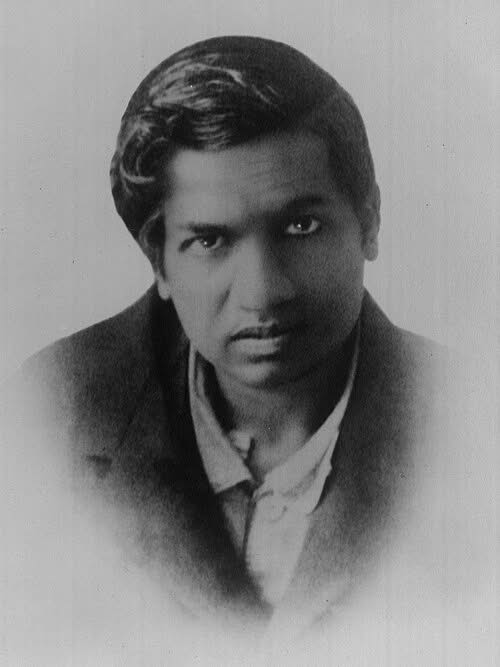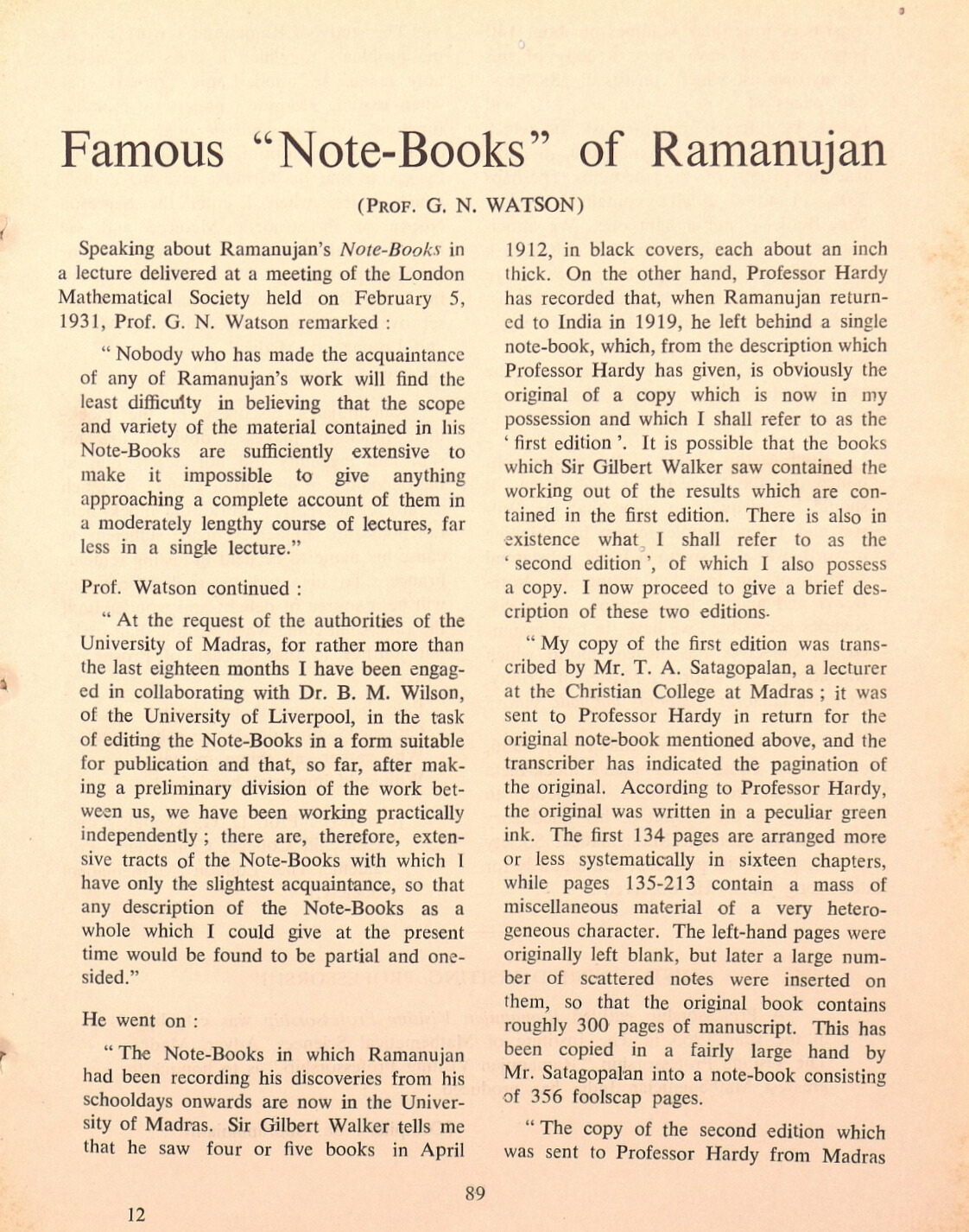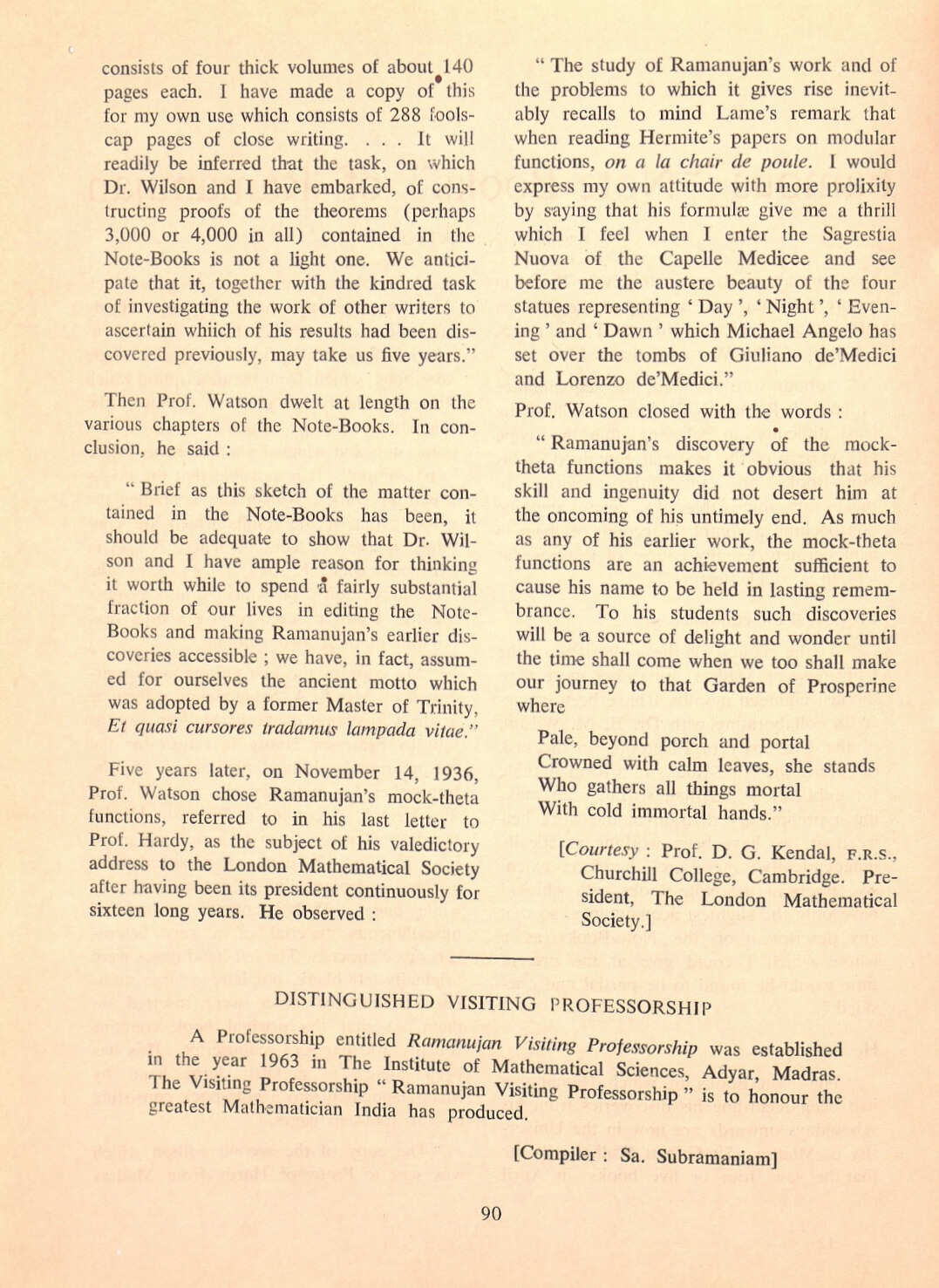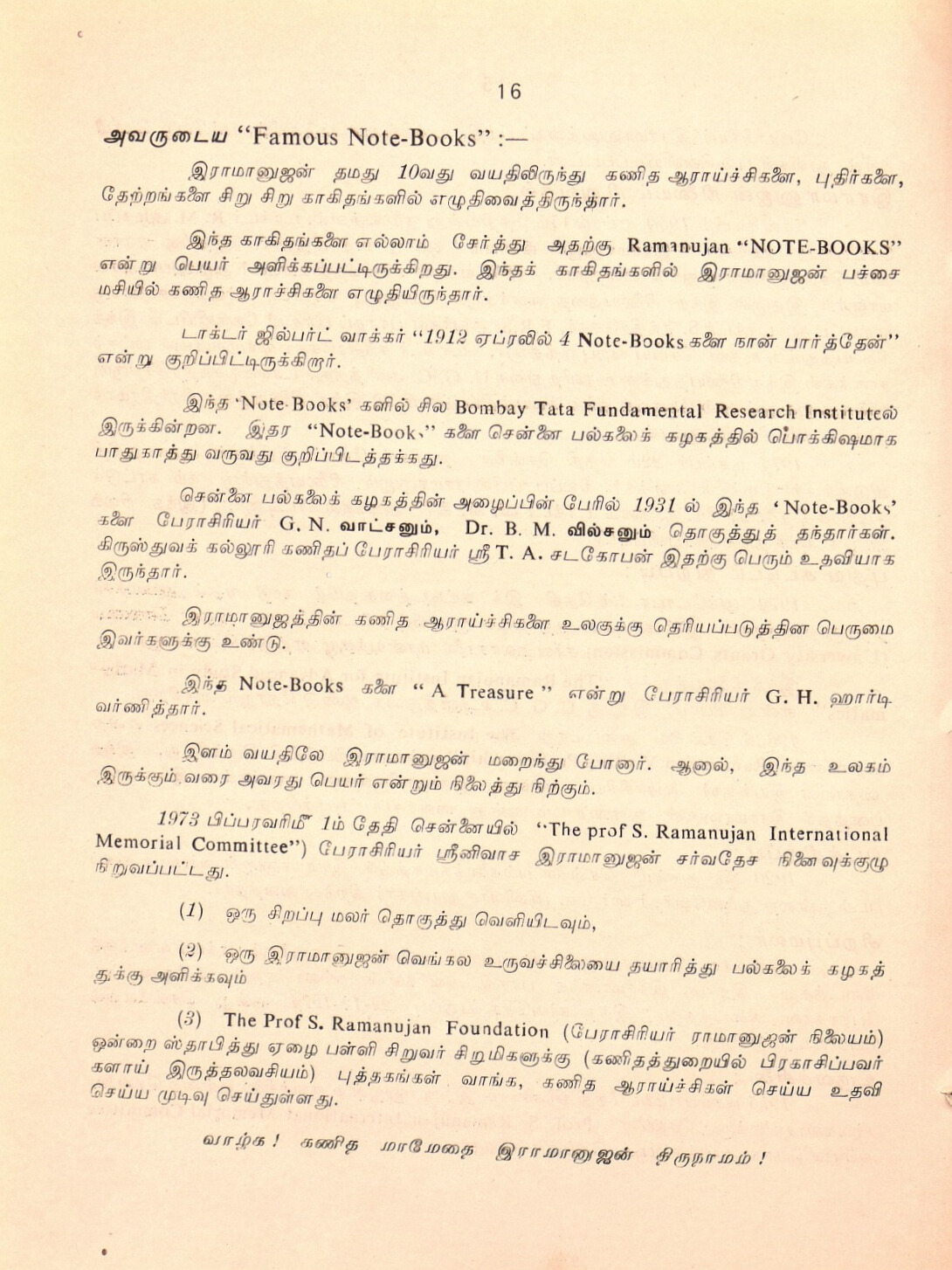From Dreams to Infinity: The Life and Legacy of Srinivasa Ramanujan

Srinivasa Ramanujan is one of the most renowned mathematicians of all time, and with one of the most surprising stories. Born on 22 December 1887 in Erode, then in Mysore State, he was a mathematical prodigy from a young age. By the time he reached secondary school he had outpaced his teachers, and proceeded to advance as an autodidact. He claimed that mathematical theorems were revealed to him in his dreams.
At the age of 16, he got hold of a library copy of 'A Synopsis of Elementary Results in Pure and Applied Mathematics' by G. S. Carr, a collection of about 5,000 theorems presented without proof, which he studied very carefully. It is at this point, in 1903, that he began compiling his notebooks (writing on looseleaf sheets, which were only later bound together.) Like Carr, Ramanujan also presented his theorems without proof; it is often thought that the format of Carr's book was an influence. Another possible reason is the cost of paper; Ramanujan probably worked out most of his results on a slate, transferring only the final form of the theorems to the notebooks.
In 1913, Ramanujan wrote a letter which got the attention of English mathematician G. H. Hardy at Cambridge University. Hardy showed the letter to other mathematicians at Cambridge, who were amazed by the work. Ramanujan was invited to Cambridge and travelled the following year, bringing these three notebooks to England with him. A fourth notebook, often called "the lost notebook", contained later work, and was only rediscovered in 1976.
There are around 3900 theorems contained in these pages. There has been some debate about how many of them were rediscoveries of results that had been already proven (though unknown to Ramanujan), but it is likely that at least one third were new discoveries. The second notebook is considered to be a revised and expanded version of the first, with the third notebook consisting of 33 pages of unorganized material. The notebooks contain famous results on hypergeometric series, on continued fractions, on asymptotic expansions of modular forms, on q-series and theta functions, and on elliptic functions. They also include Ramanujan's Master Theorem for the evaluation of definite integrals.
After a five-year stay in English, Ramanujan returned to India in ill health, and died tragically shortly thereafter at the age of 32. Nevertheless, he has one of the richest legacies of all mathematicians. His notebooks, along with his work at Cambridge, have opened whole new fields in mathematics, and have inspired research for well over a century.
A facsimile edition of these notebooks was brought out by the Tata Institute of Fundamental Research in 1957.
The works of Ramanujan have been meticulously preserved in Madras University. Now they all have been digitized by Tamil Virtual Academy and uploaded in their Tamil Digital Library for the benefit of scholars and mathematical researchers.
● Manuscript of Srinivasa Ramanujan - book 1
● Manuscript of Srinivasa Ramanujan - book 2
● Manuscript of Srinivasa Ramanujan - book 3
Rakesh Khanna grew up in Berkeley, California, of mixed Punjabi and Anglo-American heritage. He studied mathematics at the University of California and at IIT Madras. He has been an editor and co-author of school mathematics textbooks. He co-founded Blaft Publications in Chennai with his wife, Rashmi Ruth Devadasan, in 2008; the company publishes translations of Indian-language pulp fiction, folklore, weird fiction, and graphic novels.
Professor Srinivasa Ramanujan Commemoration Volume
(published on December 22, 1974)
Courtesy: The Professor Srinivasa Ramanujan International Memorial Committee, Madras


